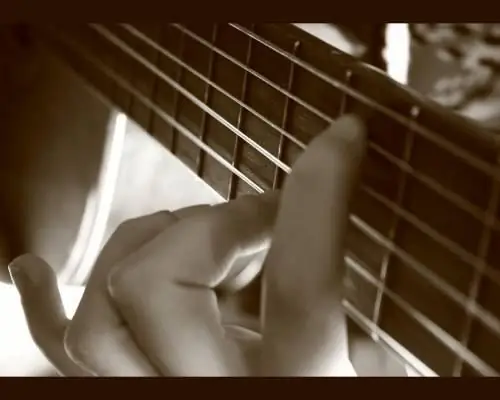Before you can start playing the guitar, you need to set it up. And you should start with the scale. The scale of a guitar is the distance between the nut and the saddle. However, many professional musicians disagree and feel that tuning compensation should be added here.

Instructions
Step 1
When tuning your guitar, be aware that the scale of the guitar is not influenced by the scale itself, but by how correctly it was calculated and embodied in a specific sample. As you know, the 12th fret corresponds to the middle of the stretched string. If the string does not "build", then it has a different cross-sectional area in different sections, which is typical for worn strings.
Step 2
Calculate the scale of the guitar using a special table. By correlating the scale characteristics of your guitar with the readings on the chart, you will get data regarding each fret and the entire scale in general.
Step 3
It will be useful to remember what scales guitarists have to deal with. For electric guitars, it is 648 or 629 mm, for classical guitars - 650 mm, and for Soviet-made guitars - 630 mm. The guitar scale can be measured with a metal ruler, which turners usually use, as it is fairly accurate. A caliper is also good. Start measuring. So, for example, when adjusting the scale of a classical guitar, its center will correspond to a distance of 325 mm.
Step 4
So, place the metal ruler zero at the 12th fret and look at the zero fret. If the resulting distance is less than half the scale by about half a millimeter, then you are doing everything right.
Step 5
A completely different picture will be on the saddle. Here the readings for each string will be different, since this is not influenced by the dimensions of the sills, but by the points of contact of the strings. To adjust the scale, it is very important to define them correctly. This is because the saddle and saddle are incorrectly positioned relative to the frets, as this does not take into account the corrections.
Step 6
If tuning the scale is new to you, then follow the advice of the professionals - it should only be done with new strings. Old strings, even with accurate measurements, will not give a good result. The same goes for the frets. Worn frets lose their roundness, which means that touching will not fall on the center of the fret, which also leads to a violation of the scale calculation.






